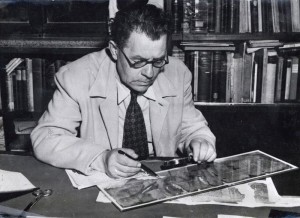Sukenik and the Dead Sea Scrolls, Part VI Conclusions
We shall now list the main points of Sukenik’s overall thesis and ask how they stand up today. We will see that the extent of his understanding was remarkable and that he truly grasped the issues relating to this discovery.
- The scrolls are ancient, dating to the two centuries B.C.E. up to 70 C.E. he was completely correct.
- The scrolls stem from the Essene sect. This is of course the dominant scholarly view.
- The Damascus Covenant, or Document (Zadokite Fragments), stem from the same sect. He is proven correct by the findings of manuscripts of this text at Qumran.
- Qumran is a genizah. Most would disagree, but remember that in his time the site had not been excavated.
- The Hodayot teach us fundamental beliefs of the sect. He was right.
- The Teacher of Righteousness may have authored some or all of the Hodayot. Most scholars agree at least to some.
- The War Scroll dates to the Hellenistic period. Most agree, although some date it to the Herodian period.
- The Bible was still not standardized in the scroll period, and this is reflected in parallel texts. He was right.
- Isaiah A is still closer to MT than to LXX – he was right, except that we now understand the category of mixed texts.
- The scrolls throw light on Jewish religious life in the Greco-Roman period, especially the previously unknown texts. Correct.
- Only a small part of Jewish literature from the Second Temple period had been known – certainly the case.
- Pesher is very different from midrash and plain sense commentary. No question.
So what is the score? Sukenik batted almost 1000. He was almost certainly wrong regarding the genizah – but right on almost everything else. By 1954 full transcriptions of his texts were published, finished after his death by his students. Imagine had he lived to see the entire corpus! He laid a firm foundation, at least for those scholars who could read his Hebrew works. And, of course, the greatest of his students turned out to be his son, Yigael Yadin, who truly did much to finish his father’s unfinished work.


Dear Sir
Who was the son of Onias III in 159 – 152 as Teacher of Righteousness?
from
John Stuart